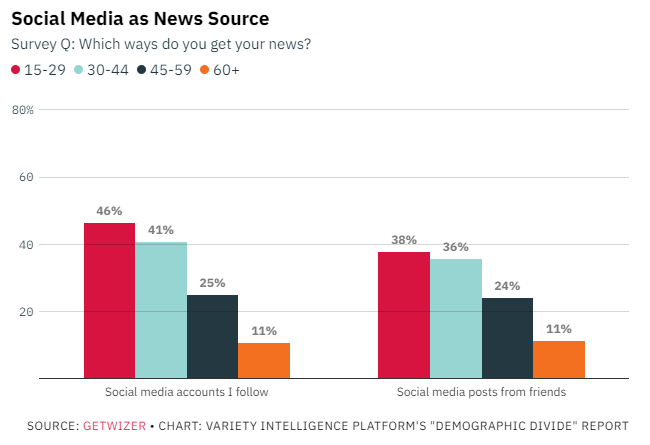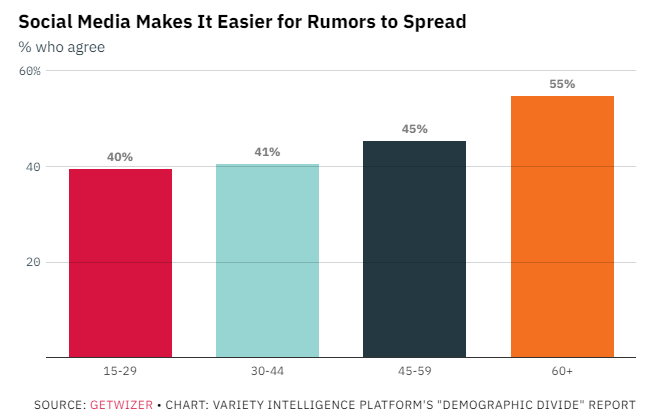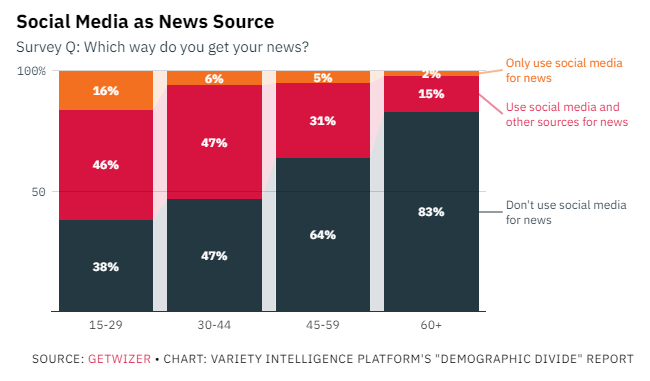Analysis of news consumers on social media
Results from VIP+'s partnership with GetWizer on the “Demographic Divide” report show that nearly half of those aged 15-29 say that social media accounts are a way for them to get news.

Interestingly, there is an inverse relationship between getting news from social media accounts and believing that social media contributes to the spread of rumors. Younger demographics are the least likely to agree with this, while more than half of those over 60 believe misinformation is more likely to spread in the social age.

A key statistic to note is that about one in seven consumers between the ages of 15 and 29 get their news through social media alone, a much higher percentage than all other age groups. Fact-checking is rare on social media, and a clear problem is that more than half of people under 45 get all or some of their news through the media.

Reasons for the rapid spread of disinformation
However, the
spread of disinformation on social media is so fast and spreads so much that anyone
can be both a purveyor and a victim of disinformation.
News containing
disinformation have proven to be more novel than news containing real information -
they contain new information that users have never seen before. Disinformation can
provoke an instinctive emotional response from readers, with people showing greater
surprise and disgust. This novelty and emotional impulse seems to be what generates
more retweets.
Especially among young news consumers, social media has a
strong influence on news, so more formal oversight may be needed.